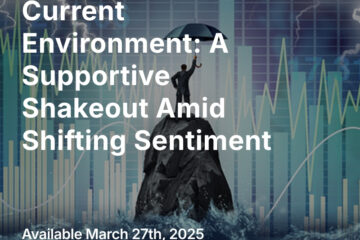The points raised in our main post this week all suggest to us that the shelf-life of the traditional, indexed, 60/40 portfolio is close to expiration. Bonds were long thought to be — and long functioned as — counterweights to the equities in a portfolio, and would blunt volatility, since they were negatively correlated. They are now positively correlated, as both stock and bond indexes are at historically abnormal valuations, and heading into an era in which inflation and rising rates will challenge the valuations of most long-duration assets.
The simple question to ask is what kind of returns can be expected from an indexed portfolio of correlated assets, when all of those indexes are challenged by the same secular changes? We believe that the sequence of events that began with the pandemic, and are accelerating in the current environment of commodity inflation, suggests that increasingly, investors who want to secure returns that exceed inflation will have to (1) abandon the indexes to identify stocks that are differentiated in business model, sector exposure, and management expertise, and (2) abandon a devotion to a fixed asset-class allocations, and embrace alternatives, including energy, commodities, cryptocurrencies, and precious metals.
We have been preparing for this environment for some time — indeed, since early last year, when we identified the persistent nature of the inflation unleashed by pandemic monetary and fiscal policies.
While it is difficult to pencil out significant appreciation in the broad stock indexes from this point, however, we do not at all mean to downplay the significance of innovation. We believe that what makes the most sense is what we have endeavored to undertake for our own clients: maintaining positions in genuinely disruptive and innovative companies in all the usual-suspect industries, predominantly tech-centric: AI, big data, cybersecurity, software, business digitization, novel materials, advanced semiconductors, and biotechnology (yes — even when the biotech indexes have made a round-trip back to where they were before the pandemic). Any opportunity to buy companies like these at reasonable prices will be an opportunity to seize. We do not believe that those prices have yet been reached. We believe that growth should be bought, but only at a reasonable price. Prices for rapid-growth companies were wildly out of line in 2021, and still have not reached rational levels.
With that said, however, we believe strongly that investors should think of buying bonds only after inflation has been broken, and we expect that to be well into the future. Instead we believe they should consider establishing or bolstering positions in commodities — energy-related (hydrocarbons, copper, zinc, and lithium), tech-critical metals, rare earths, and precious metals. And finally, we continue to believe that cryptocurrencies and decentralized finance platforms, in spite of growing pains (such as the recent Axie Infinity hack), will gradually evolve into systemically important inflation hedges.
Thanks for listening; we welcome your calls and questions.



